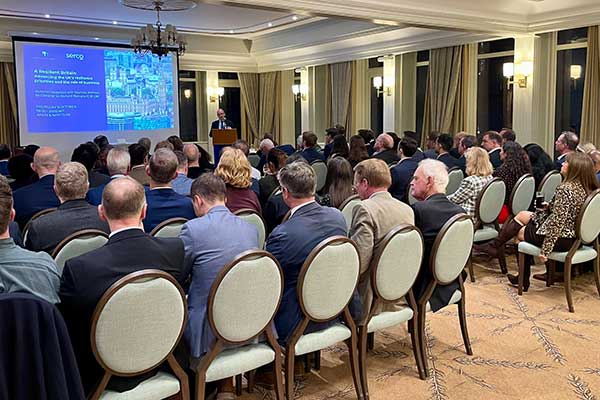Every so often an incident happens which leaves the company responsible for fixing it working round the clock with its reputation on the line, and most of its peers watching with bated breath, wondering just how they would cope if it ever happened to them.
Perhaps UK Power Networks’ greatest test to date was when 5,000 central London properties, including theatres and restaurants, lost power over Easter weekend 2015 in the Kingsway area.
A fire fuelled by gas raged through an underground utilities tunnel for two days, causing thousands to be evacuated, roads to be closed and shutting down part of the West End, and melting vital electricity cables.
In an extraordinary effort, the UK’s biggest operator – which serves 8.2million customers across London, the East and South East – pulled out all the stops to lay four kilometres of new cabling so that local businesses could open their doors as normal on the Tuesday after the bank holiday break – almost as if nothing has happened.
Heroic examples of electricity workers going above and beyond their normal duties at Kingsway helped the company win Utility of the Year in 2015.
Responding to sudden blackouts like this is something that all electricity network operators plan for, allowing for their different locations and customer profile.
They operate to licence conditions set by industry regulator Ofgem which are underpinned by grid and distribution codes that set the standard of resilience they should build into their networks.
For example, a large electricity substation supplying power to thousands of homes and businesses is required to be more resilient than others, and must be upgraded when people’s power demands change over time. Even smaller, more local electricity circuits have to be able to pick up at least one MegaWatt of ‘load’ from alternative sources if some of their equipment is damaged or develops a fault.
Bill D’Albertanson, emergency planning manager at UK Power Networks, says:
“Resilience builds from the bottom up, and at the top is major investment involving installing expensive plant to mitigate against the risk of what we call ‘High Impact, Low Probability’ (HILP) events.
“These happen very rarely, but when they do the effect can be severe on many thousands of our customers.
“We keep up with changing environments, changing technologies including the move to low carbon systems, and how solar power can be used for example, to see if they impact on our resilience, and sometimes they can be used to help it.
“We have HILP events and our highest risk geographical areas across all three of our networks are reviewed regularly so that our resilience plans are current and well-placed to help us deal with them quickly and effectively when they happen.
“We have also carried out extra work in our biggest high risk area, London, which comes with its own constraints – for example finding the space and permissions to build extra equipment is a challenge.”
Customers served by UK Power Networks have seen huge improvements in network reliability. They only experience a power cut once every 2.5 years on average – a 40 per cent improvement since 2010.
In 2010 the average power cut lasted over an hour: today it lasts just over 30 minutes – a 50 per cent improvement.
The company has a big focus on recovering from major events, particularly weather-related damage to our networks, working inside the business and with others to make sure it meets customers’ needs and expectations.
Bill adds:
“For us as a company, it’s not just about our teams successfully restoring power, it’s about keeping customers informed, giving updates, helping the vulnerable with individually-tailored support.
“While there are engineering solutions to get the lights back on, during major power cuts we also work with respected experts in supporting communities including the British Red Cross and community food vans.
“Where we used to have additional outside support, we’ve brought our call centre back in-house to maintain our high standards and can rally up to 1,000 call advisors from across all our departments if needed – there’s not many contact centres that can boast such numbers.
“But we don’t want to sit back on our laurels, so we continue to look at how we can improve our services to customers both on a day-to-day basis and when major incidents happen.”
To find out more see www.ukpowernetworks.co.uk and to sign up for free extra help during a power cut in London, the East or South East see www.ukpowernetworks.co.uk/power-cut/priority-services-register.
UK Power Networks CEO Basil Scarsella spoke at a Resilience First breakfast briefing on resilience in the electrical supply on September 18. See more about members’ events.
For further reading, please visit our Knowledge Hub.



